Spinal Conditions
As a leading spine surgeon in Manhattan, Jun S. Kim, MD is trained and has experience with degenerative, adult and pediatric deformity, tumor, and cervical conditions. He’s had the privilege of training under both orthopaedic surgeons and neurosurgeons. Below is a sample of the conditions that Dr. Kim is able to treat.
- Degenerative Disc Disease
- Herniated Disc
- Kyphoscoliosis
- Kyphosis
- Myelopathy
- Pseudoarthrosis
- Radiculopathy
- Scoliosis
- Spinal Stenosis
- Spondylosis
Degenerative Disc Disease
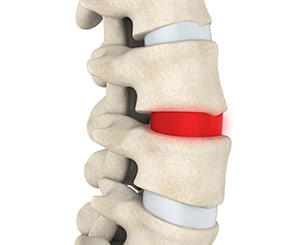 Degenerative disc disease is characterized by a breakdown of the disc. This may cause the disc to crack, flatten, or turn to bone. As the disc flattens, the vertebrae can rub together and may cause bone spurs. The bone spurs may cause irritation to the nerves, creating discomfort.
Degenerative disc disease is characterized by a breakdown of the disc. This may cause the disc to crack, flatten, or turn to bone. As the disc flattens, the vertebrae can rub together and may cause bone spurs. The bone spurs may cause irritation to the nerves, creating discomfort.
Herniated Disc
 Discs are made up of mostly water. When the hard outer ring of the disc, known as the annulus, develops a tear, the soft material from inside the disc may bulge through the tear. This bulging portion of the disc can press on the nerve root or the spinal cord. There are many reasons that may cause the annulus to tear, which include trauma to the spine and/or degenerative disc disease. A herniated disk may be referred to as a “ruptured”, “prolapsed”, or “bulging” disc.
Discs are made up of mostly water. When the hard outer ring of the disc, known as the annulus, develops a tear, the soft material from inside the disc may bulge through the tear. This bulging portion of the disc can press on the nerve root or the spinal cord. There are many reasons that may cause the annulus to tear, which include trauma to the spine and/or degenerative disc disease. A herniated disk may be referred to as a “ruptured”, “prolapsed”, or “bulging” disc.
Kyphoscoliosis
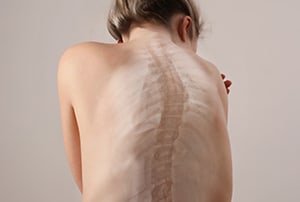 Kyphoscoliosis refers to cases where the deformity also includes a kyphosis (humpback or roundback deformity) with scoliosis (side to side spine curvature or deformity). The vertebral bodies may be rotated and attenuated. This can lead to a deformity that can be seen not just from the front, but also from the patient’s side. These deformities require a multidisciplinary team at a tertiary care health system to treat.
Kyphoscoliosis refers to cases where the deformity also includes a kyphosis (humpback or roundback deformity) with scoliosis (side to side spine curvature or deformity). The vertebral bodies may be rotated and attenuated. This can lead to a deformity that can be seen not just from the front, but also from the patient’s side. These deformities require a multidisciplinary team at a tertiary care health system to treat.
Kyphoscoliosis can be associated with a number of congenital conditions or can be acquired as a sequelae of infection or trauma.
Kyphosis
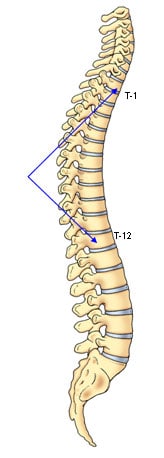 Kyphosis is a forwarding bend of the spine. This can manifest clinically as a roundback or humpback deformity. This deformity is most apparent when evaluating a patient’s sagittal or side profile.
Kyphosis is a forwarding bend of the spine. This can manifest clinically as a roundback or humpback deformity. This deformity is most apparent when evaluating a patient’s sagittal or side profile.
In the normal spine, an individual has a gentle rounding or kyphosis of the thoracic spine which is located from the shoulders to the bottom of the rib cage. This leads harmoniously into a lumbar lordosis or sway back which is located in the lower back. This leads to a balanced spine that effectively leads to a head that is well balanced over the pelvis. This balance of thoracic kyphosis on top of lordosis effectively leads to the lowest energy expenditure in the human spine.
A normal thoracic kyphosis ranges from 20 degrees to 45 degrees in a large portion of the population. Values higher than 45 degrees may be abnormal and is referred to as hyperkyphosis.
Myelopathy
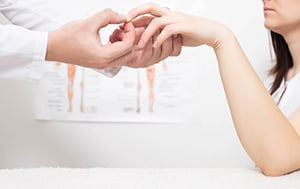 Myelopathy is a disease process meaning that something is wrong with the spinal cord. Most commonly, this condition is due to pressure or compression on the spinal cord. The symptoms may include loss of hand dexterity (buttoning buttons or picking up small objects may be difficult), loss of balance, or tripping. In severe cases, there may be loss of bowel and bladder control or even quadriplegia.
Myelopathy is a disease process meaning that something is wrong with the spinal cord. Most commonly, this condition is due to pressure or compression on the spinal cord. The symptoms may include loss of hand dexterity (buttoning buttons or picking up small objects may be difficult), loss of balance, or tripping. In severe cases, there may be loss of bowel and bladder control or even quadriplegia.
Pseudoarthrosis
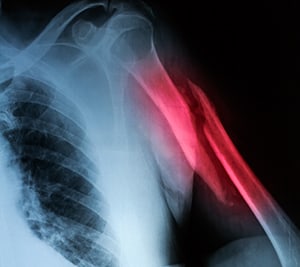 Pseudoarthrosis refers to a condition where the bone did not fuse following spinal fusion surgery. If this condition occurs, 50% of patients remain asymptomatic; however, the remaining 50% have severe enough symptoms that they require another operation.
Pseudoarthrosis refers to a condition where the bone did not fuse following spinal fusion surgery. If this condition occurs, 50% of patients remain asymptomatic; however, the remaining 50% have severe enough symptoms that they require another operation.
Radiculopathy
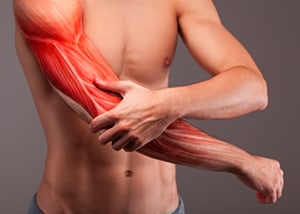 When the nerve root is pinched or irritated in the spinal column, a range of radiculopathy symptoms can develop. The symptoms may include arm pain, weakness, numbness, and/or wasting away of the muscles (atrophy).
When the nerve root is pinched or irritated in the spinal column, a range of radiculopathy symptoms can develop. The symptoms may include arm pain, weakness, numbness, and/or wasting away of the muscles (atrophy).
Scoliosis
 Scoliosis is a side to side spinal curve. It is most apparent when a patient is viewed from the front or back. It can manifest as asymmetry in the height of the shoulders, hip or waist. Scoliosis is in fact a three dimensional deformity as the vertebrae or the bones are axially rotated. This manifests as a rib hump causing one’s shoulder blades and rib cage and/or flank to be more pronounced on one side compared to that of the other side. This is most apparent if the patient leans forward and the provider observes their spine from behind (i.e. Adams Forward Bend Test).
Scoliosis is a side to side spinal curve. It is most apparent when a patient is viewed from the front or back. It can manifest as asymmetry in the height of the shoulders, hip or waist. Scoliosis is in fact a three dimensional deformity as the vertebrae or the bones are axially rotated. This manifests as a rib hump causing one’s shoulder blades and rib cage and/or flank to be more pronounced on one side compared to that of the other side. This is most apparent if the patient leans forward and the provider observes their spine from behind (i.e. Adams Forward Bend Test).
Scoliosis does not result from poor posture or carrying heavy objects like a back pack. In many cases (>80 percent), the cause of scoliosis is not known. There may be a partial genetic etiology. Such cases where there is no clear etiology are referred to as idiopathic (which means undetermined or unknown cause).
Scoliosis can also be associated with other conditions:
Neuromuscular scoliosis is associated with diseases such as cerebral palsy, spinal muscular atrophy (SMA), and Chiari malformations.
Dystrophic scoliosis is associated with such conditions as neurofibromatosis.
Syndromic scoliosis is associated with congenital disease such as spina bifida, connective tissue disorders (Marfan syndrome, Ehler-Danlos syndrome), genetic conditions (such as neurofibromatosis), Noonan syndrome, Dandy-Walker syndrome, VATER, VACTERL syndrome, etc.
Spinal Stenosis
 Spinal stenosis is a narrowing of the spinal canal. While some people are born with a narrow canal, others may develop a narrow canal because of bulging discs or bone spurs. The presence of bulging disks and bone spurs can narrow the space through which the nerve roots exit the spinal canal.
Spinal stenosis is a narrowing of the spinal canal. While some people are born with a narrow canal, others may develop a narrow canal because of bulging discs or bone spurs. The presence of bulging disks and bone spurs can narrow the space through which the nerve roots exit the spinal canal.
Spondylosis
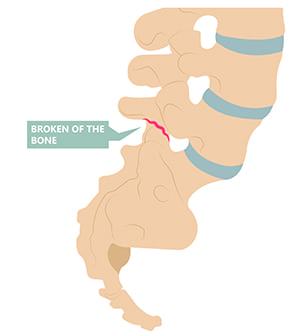 Spondylosis is a degenerative arthritis of the spine, which may cause pressure on the nerve roots.
Spondylosis is a degenerative arthritis of the spine, which may cause pressure on the nerve roots.